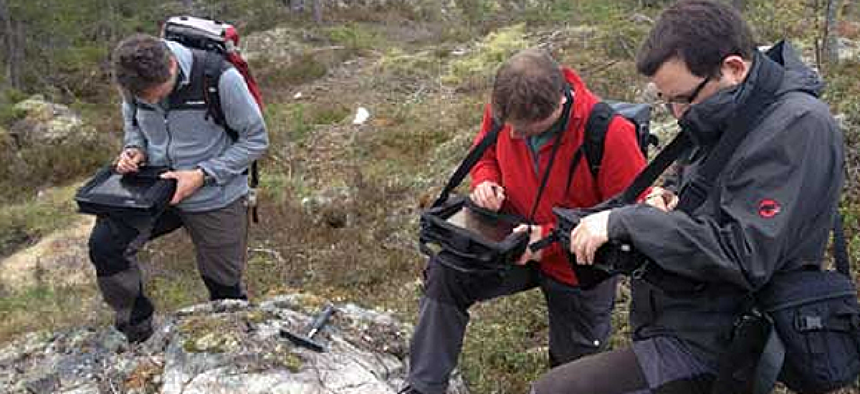What to look for in rugged tech


Connecting state and local government leaders
Rugged tablets offer a secure and cost-effective solution for employees in the field -- but only if the IT staff chooses carefully.
Whether they’re working in the remote wilderness or outdoors in the city, government employees need mobile access to user-friendly tech. In pouring rain, subzero cold, triple-digit heat or excessive sun, workers can’t rely on fragile consumer products to get their work done. They need rugged devices that can survive the elements and keep on working.
Rugged tablets boast the same specs as the latest consumer tablets, while offering distinct advantages for those who often work outdoors. But do these devices really offer enough to differentiate themselves from other enterprise solutions, and are they secure enough for government standards?
Rugged tablets are designed to survive even the harshest conditions, starting with the internal components. Shock protection begins at the level of a magnesium alloy skeleton, which allows these devices to be dropped and absorb the shock.
A quality rugged tablet will withstand not only repeated drops, but also exposure to water, dust, sand, debris and extreme temperatures, all while remaining fully operational in direct sunlight. In fact, well-built rugged tech can endure full immersion in water for a short period of time. These devices should also pass both the U.S. Military Standard for durability and Ingress Protection Standards, which rate a device on its susceptibility to contamination from liquids or other materials.
Beyond durability, field workers need devices they can easily access and operate in the field. Touch screens should cut through glare in sunlight and be usable with or without gloves, regardless of whether they’re clean or covered in dust, sand or muck.
A more secure solution
Some rugged tablets are even designed to allow tool-free access to their internals, so if any repairs or upgrades need to be made, they can happen in the field with minimal time lost. This accessibility also provides added convenience for agencies with stringent security protocols that require hard drives to be removed and locked away when not in use.
For more secure access, the Common Access Card readers come standard in many models, and additional features like fingerprint readers and near-field communications capabilities are available. This way, agencies can restrict access to authorized personnel.
While most devices come with an Android or Windows image preinstalled, agencies can install a custom image that has their own specific security software. And because rugged tablets are built using common software standards, most custom operating systems should be compatible. These additional security features make integrating these devices into an existing workflow relatively painless.
Adopting rugged tech
Rugged solutions rarely take any additional effort to adopt in the workplace – they’re functionally the same or better. As long agencies aren’t running legacy applications that run only on ancient hardware, compatibility should not be an issue.
The cost of adoption is also no longer prohibitive. Increased competition has driven prices down to more competitive rates, and rugged devices’ prolonged durability makes them better-value alternatives for the long term.
Choosing the right devices is often the biggest barrier to adoption with rugged tech. Agencies should understand what employees actually need for their work environments and use cases. Otherwise, add-ons or costly integration problems with third-party devices could quickly ratchet up prices, and hardware problems could complicate basic tasks, leaving employees frustrated.
In many crucial situations, usability, speed and security simply can’t be compromised. For agencies that largely operate in a variety of harsh outdoor conditions, rugged tech offers a secure and cost-effective solution that has the power to satisfy the needs of field employees and IT staff alike.
NEXT STORY: What's holding back Hadoop?




